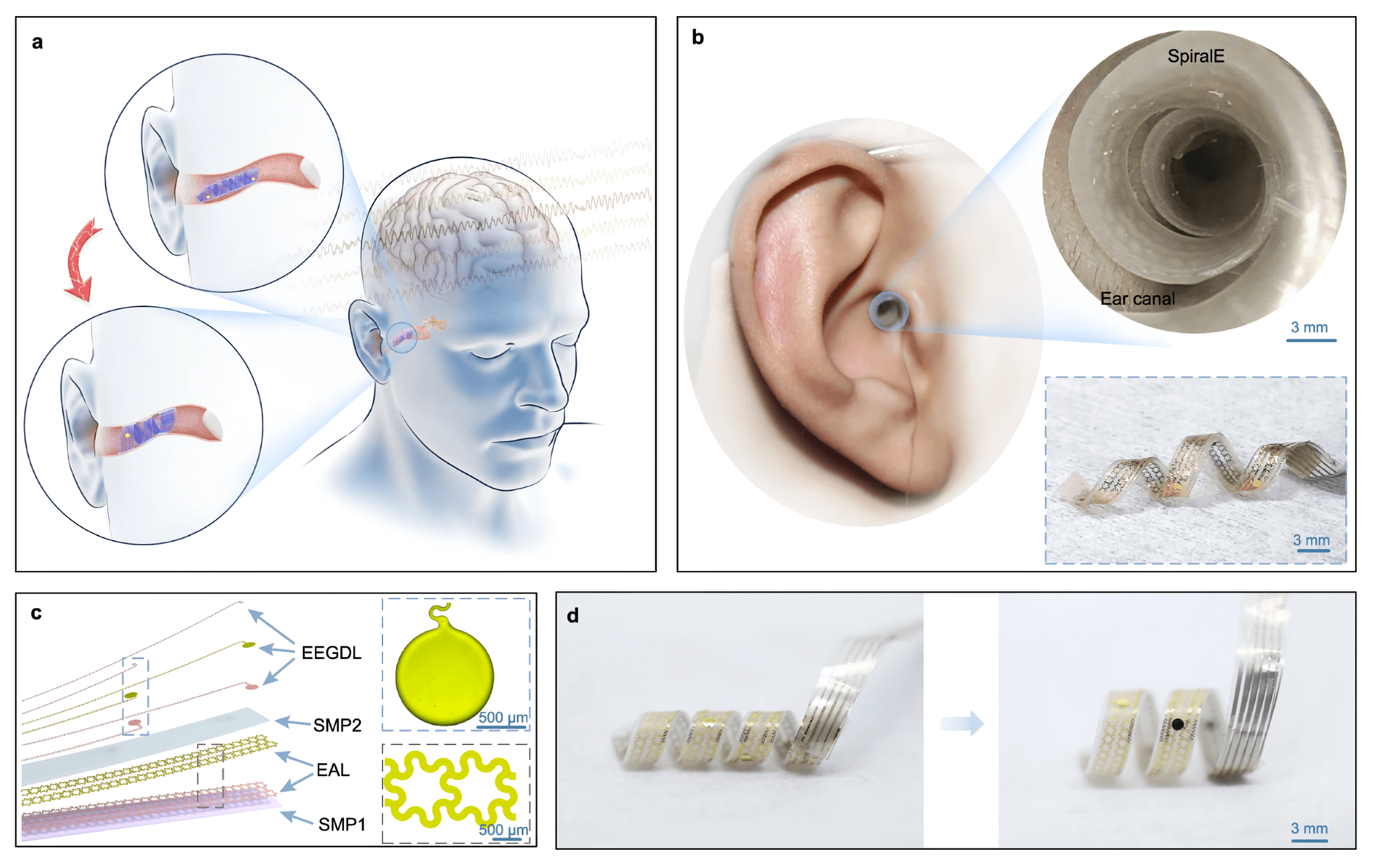Forward-looking: Scientists in China have developed a brain-computer interface (BCI) that is far less invasive than competing devices. The SpiralE BCI is designed to be inserted into the ear canal. It is made of a flexible material and thanks to its unique spiral design, does not interfere with the wearer's hearing. The device is far less invasive than surgically implanted alternatives and is more practical than non-invasive solutions like headbands or caps.
These advantages make it far more suitable for daily use and, according to the team out of Tsinghua University in Beijing, demonstrate that natural and discreet wearables can be integrated into real-life applications.
Speaking of, potential applications are aplenty. As The Independent highlights, BCIs could be used to translate thoughts into text, control digital objects with your mind, or even augment human memory. Depending on your view, that could either be incredibly appealing or outright terrifying.

The publication also points to a 2019 report from the Royal Society noting how such technologies could transform medicine and fundamentally change how we interact with technology and each other. Conversely, the report also warns of ethical concerns regarding issues like autonomy, privacy, and equality of access.
The report concluded that BCIs could very well challenge the essence of what it means to be human.
Back in May, the FDA granted Elon Musk's Neuralink Corporation permission to start testing brain implants in humans. In 2021, a New York-based firm known as Synchron received FDA approval for human trials. The company conducted its first implant that summer. Months later in December, a 62 year old paralyzed Australian man with ALS (amyotrophic lateral sclerosis) used an implant to send a tweet just by thinking about it.
The team's work has been published in the scientific journal Nature Communications in a paper titled "Conformal in-ear bioelectronics for visual and auditory brain-computer interfaces." No word yet on how close the device might be to commercial availability, what capabilities it could afford compared to a surgical implant, or a potential price point.
Image credit: Milad Fakurian
